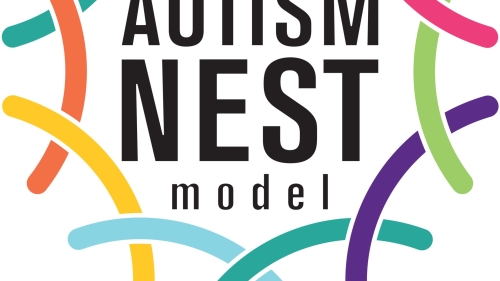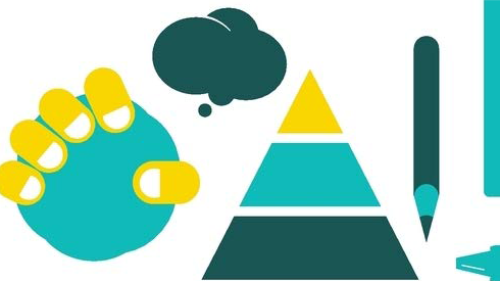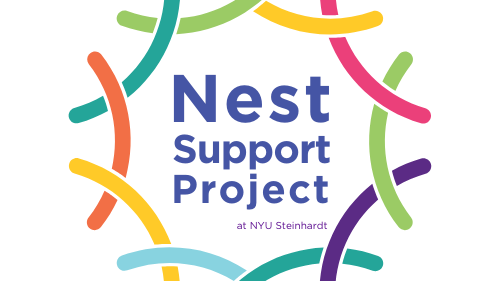Books

The Autism Nest Model:
An Inclusive Education Framework for Autistic Children
Edited by Shirley Cohen & Allison Graham Brown, MA
Published by Future Horizons, Inc.
The Autism Nest Model is a successful and much-praised program adopted by the New York City public school system as well as the top-ranked Danish school system. It has engaged and educated autistic children and their neurotypical peers for more than 20 years. The book's change in title from The ASD Nest Model to The Autism Nest Model is indicative of the evolution not only of language but also the understanding and practice that the new edition reflects.
The Nest Model helps schools create settings in which all children engage comfortably and successfully. Its comprehensive approach is lauded by families, students, teachers, therapists and school leaders alike. By laying out the process of developing the model, its philosophy, strategies, and practical examples, The Autism Nest Model is now available to a wide audience.

Everyday Classroom Strategies and Practices for Supporting Children with Autism Spectrum Disorders
By Jamie D. Bleiweiss, Lauren Hough & Shirley Cohen
Published by AAPC
Publications by Nest Support Project team members and Nest school staff
Characterization and Utilization of Preferred Interests: A Survey of Adults on the Autism Spectrum
Kristie Patten Koenig & Lauren Hough Williams
Occupational Therapy in Mental Health
January 2017
Verb Morphology in Egyptian Arabic Developmental Language Impairment
Donia Fahim
Arab Journal of Applied Linguistics
January 2017
Let's Talk: Navigating Communication Services and Supports for Your Young Child with Autism
Rhea Paul & Donia Fahim
Brookes Publishing
2016
The ASD Nest Middle/High School Model for Inclusive Education
Aaron Lanou
Autism Spectrum News
Summer 2015
Around the World: Supporting Young Children with ASD who are Dual Language Learners
Donia Fahim & Kelly Nedwick
Young Exceptional Children
June 2014
Inclusion and Innovation: Supporting employees on the autism spectrum
Lauren Hough & Kristie Patten Koenig
Mental Health Works Quarterly
Partnership for Workplace Mental Health, American Psychiatric Association, Inc.
2014
Social Diversity: Leveraging the power of an inclusive workforce
Lauren Hough & Kristie Patten Koenig
OT Practice
February, 2014
Issues in Implementing a Comprehensive Intervention for Public School Children With Autism Spectrum Disorders
Kristie Patten Koenig , Jill M. Feldman , Dorothy Siegel , Shirley Cohen & Jamie Bleiweiss (2014) Issues in Implementing a Comprehensive Intervention for Public School Children With Autism Spectrum Disorders, Journal of Prevention & Intervention in the Community, 42(4), 248-263
Assessing Communication in Autism Spectrum Disorders
Donia Fahim & Rhea Paul. In Handbook of Autism and Pervasive Developmental Disorders, 4th Edition, Volkmar, F.R., Paul, R., Rogers, S.J., & Pelphrey, K.A. (eds), 2014. (link to publisher)
Planning Morning Meetings for Students with ASD
By Aaron Lanou. Responsive Classroom Newsletter, Summer 2014.
Harnessing Strengths: Daring to Celebrate EVERYONE'S Unique Contributions
Winnie Dunn, Kristie Patten Koenig, Jane Cox, Dory Sabata, Ellen Pope, Lauren Foster, & Angela L. Blackwell. (2013). Harnessing Strengths: Daring to Celebrate EVERYONE'S Unique Contributions. Developmental Disabilities. March 2013.
Authentic Partnerships With Adults With Autism
Kotler, P. D. & Koenig, K. (2012). Authentic Partnerships With Adults With Autism. OT Practice. February 6, 2012, 6-12.
Case Studies in Using Strengths and Interests to Address the Needs of Students With Autism Spectrum Disorders
Aaron Lanou, Lauren Hough & Elizabeth Powell (2011). Case Studies in Using Strengths and Interests to Address the Needs of Students With Autism Spectrum Disorders. Intervention in School and Clinic, 47(3), 175-183.
Collaborative Team Teaching: The ASD Nest Program, Part 1: The Collaborative Mindset
Jacqueline Dowd, Stacy Emspak, Hannah Goldstein, Patricia Mahalko, Donna Mizrahi, Melissa Puglisi, Tamara Restrepo, Jen Toplan, & Dolores Troy-Quinn, Autism Asperger’s Digest, September/October, 2010
Collaborative Team Teaching: The ASD Nest Program, Part 2: The “Nitty Gritty” – Getting Started
Patricia Mahalko & Dolores Troy-Quinn, Autism Asperger’s Digest, November/December, 2010
When New Things Are Exciting
Natalia Arredondo, Autism Asperger’s Digest, November/December, 2010
Strategies for Supporting the Inclusion of Young Students With Autism Spectrum Disorders
Cohen, S., Bleiweiss, J., Mouzakitis, A., & Fahim, D. (2010). Strategies for Supporting the Inclusion of Young Students with Autism Spectrum Disorders. Focus on Inclusive Education, 8 (1), 1-7.
The ASD Nest Program
Koenig, K. P., Bleiweiss, J., Brennan, S., Cohen, S., & Siegel, D. (2009). The ASD nest program: A model for inclusive public education for individuals with Autism Spectrum Disorders. Teaching Exceptional Children, 42(1), 6-13.
When I Get Mad: Anger Management and Self-Regulation in the Classroom
Maas, C., Mason, R., & Candler, C. (2008). When I Get Mad: Anger Management and Self-Regulation in the Classroom. OT Practice. October 20, 2008, 11-16.
Nest in the Media
When Nest is best
Like many other 6th-graders, 11-year-old Adam plays Minecraft, watches sports and is a whiz at puzzles. In school, although he's fascinated with the dates and historical figures he learns about in social studies, he struggles to connect with his peers during group work and sometimes yells loudly to make his displeasure known.
Making Room in Class for Children With Autism to Blossom
"In Nest, teachers do a lot of modeling of appropriate social interaction. In a third-grade class, Michelle Dragisics divided the students into small groups to measure polygons in tape on the floor. In each group, one person was to take the measurements, one was supposed to help and another was to record."
Nest classroom supports students with autism
Getting Students With Autism Through High School, To College And Beyond
Colin Ozeki, 17, doesn't like to sugarcoat how autism spectrum disorder has affected his interactions with others, his emotions and his own self-confidence. He sees it as an issue to confront, something about himself to work on and improve in order to fully participate in life around him.
Danish school is role model for inclusion of kids with autism
west-info.eu, November 2015
Back to School with the ASD Nest Program
Autism Speaks, September 2015
New York program fulfills promise of inclusive education
Simons Foundation, May 30, 2011
A Schoolwide 'Movement' -- Occupational and physical therapists keep PS 396 moving
Dorothy Calaci, UFT.org. May 10, 2012

The Nest Egg
Greetings,
I am the Executive Director of the NYU Nest Support Project and am thrilled to introduce you to The Nest Egg and invite you into our Nest community! The Nest Egg is our new quarterly digital publication. The Nest Egg is designed to share best practices, key resources and knowledge, learned from our Nest Model, to enhance inclusive practices in school settings. This publication is designed for educators, related service providers and administrators who are looking to expand their knowledge about inclusive education and enhance their capacity to foster authentically inclusive classroom and school communities. The articles in the Nest Egg are intended to share information and provide meaningful strategies that can easily be implemented into your school community.
The authors of the pieces in The Nest Egg are members of our New York University Nest Support Project team. Each author has a different background, expertise, and role but works from our shared mission and vision. Our vision is “a world that authentically embraces its inherent neurodiversity” and we work toward that by training, supporting, and empowering public school communities and institutions to implement our collaborative, strengths-based model of equitable and inclusive education. Our work is directly informed by the perspectives and experiences of autistic self-advocates in order to create systems change in schools that foster self-determination in students. Our Model is designed to flexibly adapt and be responsive to the diverse school communities we serve. The philosophy, structures, and practices can be implemented in any school community and work to enhance what is already in place.
We hope that the Nest Egg inspires and empowers you.
Welcome to the Nest community!
Take good care,
Allison Graham Brown
Start creating an Inclusive Classroom Environment Following these 3 Practical Steps
Are you wondering how to create an inclusive classroom? Check out this article with 3 practical steps to cultivating a truly inclusive classroom.
Author: Allison Graham Brown
Inclusion is a big buzzword in education. Inclusion classrooms are where disabled and non-disabled students learn together. It is simple enough to place disabled and non-disabled students together in a classroom, but the challenge is creating a truly inclusive environment in which everyone believes that all students belong and that the diversity of learners makes the classroom community stronger. We can achieve true inclusion by engaging in an ongoing process, dedicating time and effort into cultivating an inclusive community through the environment, lessons, activities, routines, and language. When a space is truly inclusive, student engagement increases for all learners, there are better classroom dynamics, and learning is enhanced.
Here are three ways to start creating an inclusive classroom:
1. Represent your students in the classroom.
One of the most important things you can do to create an inclusive classroom is to make sure that your students see themselves in their classroom environment. It’s like that expression “if they can see it they can be it”. You want to make sure that your bulletin boards, walls, book collections, lesson plans and even anchor charts reflect your students’ lives, cultures, languages, religions, genders and sexual orientations, abilities and family types. You want your classroom to show all different people as joyful members of community and world so students see the potential in themselves and their classmates.
- Fill your library with books celebrating different identities such as, Sparkle Boy, A Day With No Words, The Only Way to Make Bread, Your Name Is A Song, Platanos Are Love.
- Do projects where students can share their identities like their names, or cultural foods, stories, songs. Have an important grown-up or loved one do a visit either in person or virtually to share something that is important like a story that has been passed down, or a family recipe.
- Hang up posters of Black, Latinx, Asian and LGBTQNI and Disabled famous people with different careers and backgrounds in the classroom such as astronaut Jessica Watkins, artist Frida Kahlo, or actor George Takei.
2. Celebrate your students’ uniqueness and strengths.
You set the tone for your classroom. When you shout out the individual strengths of your students they will feel empowered and their peers will notice that all students, disabled and non-disabled, no matter their background or heritage, are valued members of the classroom community.
- Include your students’ interest in your lessons, slides, and bulletin boards. Write word problems about Manga, use the Mets to teach a historical concept, allow students to include their favorite characters when they draw or write examples of new vocabulary words, create a bulletin board that students can post lyrics of their favorite song.
- Be specific when you praise your students’ strengths. “Your attention to detail helped your writing partner edit their work.” “Your commitment and focus helped your group finish the project.” “Your knowledge of facts helped us identify an error”
- Shout out the different ways students engage in learning .“Natasha used humor in the essay to prove her point while Jamar used logical reasoning statements.”, “Kendra wrote detailed notes and Lyle drew a chart about the theme of the text.”
Encourage connection between your students.
Remember to make time for students to connect around shared interests, similar experiences, or similar strengths. Feeling connected to each other fosters a sense of belonging.
- Teach the hand sign for “same” in sign-language and have students use it when they agree with each other, had a similar thought, or used the same approach.
- Set up “get to know you” activities and make sure those activities are inclusive of students who may have different abilities when it comes to speaking or writing in English or reading levels by adding pictures, translation, and various ways to record responses. Play a “Getting to Know You” scavenger hunt where students find a classmate who… has a brother, is a cousin, speaks another language, lives with a grandparent, walks to school, has a pet, etc. You can use the results to make math graphs or create a bulletin board. Or play “Shared Truths”. Have students share what they think is true about most people in their group and something they think is only true about themselves. Take turns sharing responses and noticing both similarities and uniqueness.
- Work together as a class on a math problem, creating a story, drawing a model, or writing a response. Have students take turns adding parts to bring the whole classroom community together and show that everyone’s ideas matter.
We can create classrooms in which all students feel like they belong. Taking time to make your classroom reflective of your students, celebrating their strengths, and encouraging connections helps create truly inclusive classrooms. When we set up our classrooms in this way our students feel seen, valued, supported, and truly welcome. In this type of classroom all students not only learn but they thrive, and that is the goal of inclusion classrooms.

